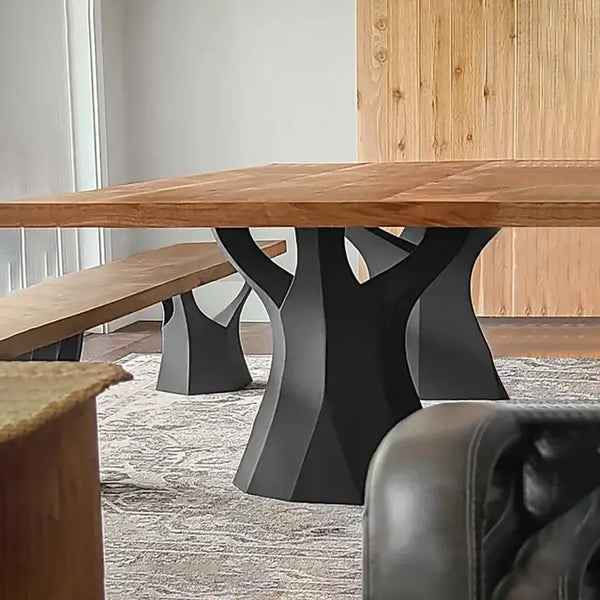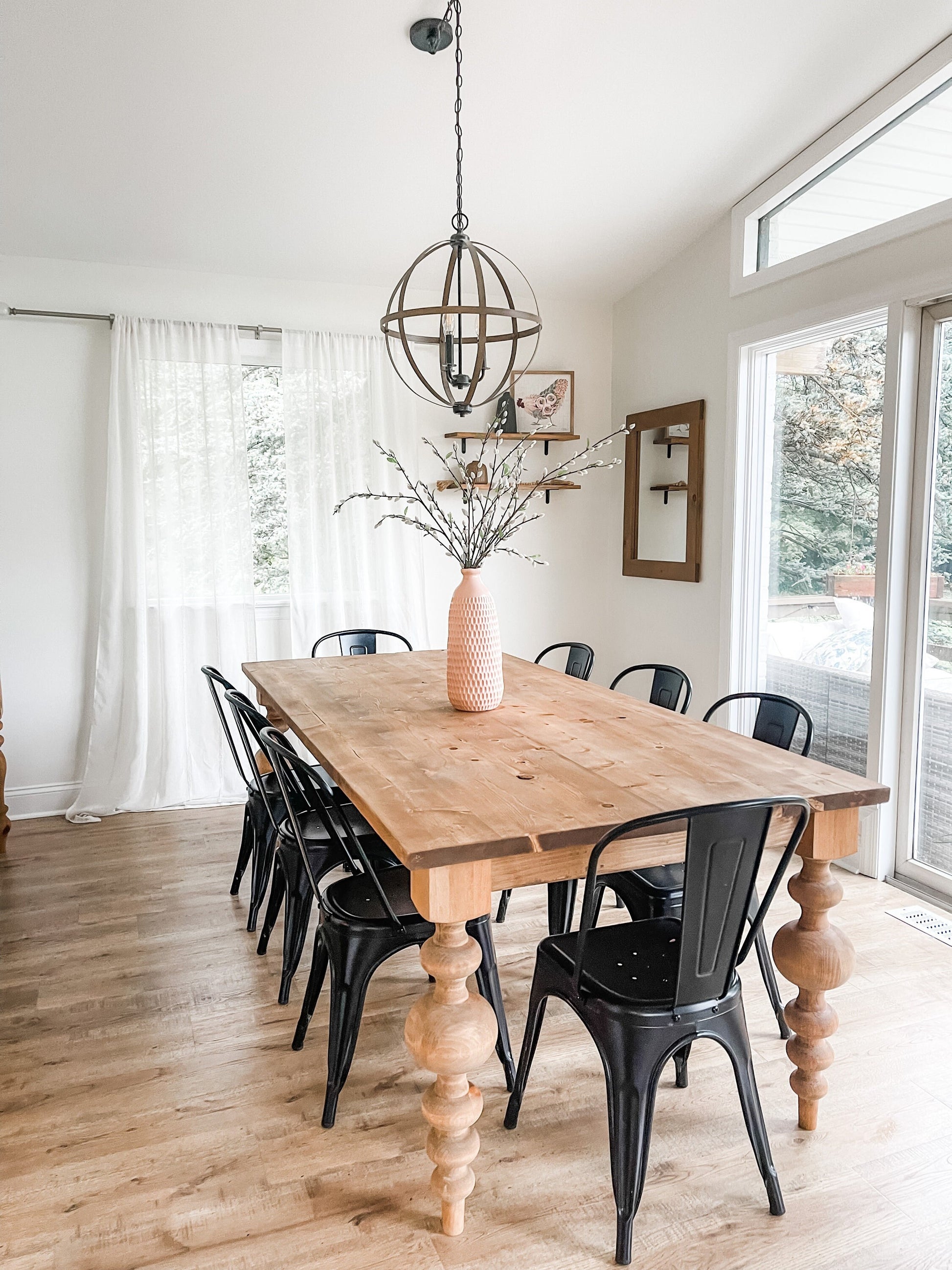Tips for Installing Dining Room Table Legs for a Modern Look
Tips for Installing Dining Room Table Legs for a Modern Look
Blog Article
Expert Tips for Installing Dining-room Table Legs for Optimum Security
When it involves installing eating room table legs, achieving maximum security is critical for both functionality and visual appeals. The procedure begins with picking the right materials and hardware, complied with by careful placement and factor to consider of weight circulation. Each step plays a vital role in guaranteeing that the finished item withstands daily use without endangering security or design integrity. Nevertheless, comprehending the subtleties of these elements can considerably influence the total result. What particular methods can enhance security also further?
Pick the Right Legs
When choosing the suitable legs for your dining-room table, it is important to take into consideration both functionality and appearances. The legs you choose will considerably affect the total layout and security of the table. Initially, review the table's planned use; if you anticipate constant celebrations, tougher legs, such as those made from strong wood or steel, might be better, as they offer enhanced sturdiness and assistance.
Common eating tables normally range from 28 to 30 inches in elevation, so make sure the legs line up with this standard for convenience. Conical legs can include a modern touch, while turned legs might share a more traditional aesthetic.

Select Appropriate Equipment
How can the ideal equipment boost the security and durability of your eating area table? The choice of appropriate equipment is crucial to making sure that the legs of your table are safely attached and able to stand up to normal use. High-quality screws, screws, and brackets give the necessary toughness to support the weight of the table, in addition to any kind of additional loads positioned upon it during gatherings or meals.
When picking screws, select those made from long lasting materials such as stainless-steel or brass, which withstand deterioration and maintain honesty in time. The length of the screws is equally vital; they need to penetrate deeply into the table's framework without compromising stability. For bolted connections, think about using lock washers to stop loosening due to resonance or activity.
Additionally, utilizing corner braces can add added assistance, specifically for bigger tables or those with heavier tops. These brackets disperse weight evenly and aid maintain the table's shape. Guaranteeing that the hardware you pick is proper for the specific products of your table will certainly better improve its general stability and longevity, enabling you to enjoy your eating experience for years ahead.
Ensure Correct Placement
Appropriate positioning of dining room table legs is important for both visual allure and practical security. To achieve optimum placement, begin by gauging the distance from the table's edges to the leg accessory factors.
Use a degree throughout installment to confirm that each leg is perpendicular to the tabletop. It is suggested to mark the wanted leg positions on the bottom of why not find out more the table with a pencil or masking tape before safeguarding them.
Moreover, verify the alignment after the initial screws are tightened up, as adjustments might be needed prior to fully protecting the hardware. By focusing on proper positioning, you not only boost the table's overall design yet likewise guarantee that it remains steady and useful for many years to find.

Consider Weight Circulation
After guaranteeing appropriate placement of the dining-room table legs, it's essential to consider weight distribution to enhance security and capability. dining room table legs. Appropriate weight circulation is essential in preventing tottering and ensuring that the click now table can sustain its desired load without risk of tipping or collapsing
When placing the legs, guarantee they are placed at equal ranges from the center of the table to uniformly distribute the weight throughout the framework. Think about the weight of the table top and any kind of products that will often rest on it, such as attractive items or tabletop devices. Tables with heavier surface areas need to preferably have legs located closer to the edges, as this makes the most of the base of support and reduces the risk of instability.
Furthermore, if the table is intended for usage in a high-traffic location, think about utilizing larger materials for the legs or adding stabilizing elements, such as cross-bracing or a reduced shelf - dining room table legs. These modifications can assist keep equilibrium and protect against moving during usage. Ultimately, a well-considered weight distribution technique will dramatically boost the table's total efficiency, ensuring it remains a attractive and functional focal point for your dining space
Examination Security Prior To Use
Evaluating the stability of the eating space table before usage is article a critical step that should not be neglected. If the table reveals instability, recognize the legs or joints that might require change.
Next, inspect that all bolts and screws are tightened up properly. Loose links can cause instability and possible damage in time. If essential, use wood adhesive on joints to boost stability, making sure to permit appropriate drying time.

Verdict
Finally, the installment of dining-room table legs calls for mindful factor to consider of materials, alignment, weight, and equipment circulation to accomplish optimum stability. By choosing high-grade fasteners and strong legs, guaranteeing accurate positioning, and dispersing weight equally, the architectural stability of the table can be substantially enhanced. Carrying out a security test prior to normal usage better makes certain that the table will certainly stand up to day-to-day stress, thus giving a risk-free and reliable dining experience.
When it comes to installing dining room table legs, accomplishing maximum stability is paramount for both performance and visual appeals. The legs you pick will considerably affect the general style and stability of the table (dining room table legs). Conventional eating tables typically vary from 28 to 30 inches in elevation, so make certain the legs straighten with this standard for convenience.Appropriate positioning of dining room table legs is vital for both aesthetic charm and practical stability.In verdict, the installation of eating area table legs needs cautious consideration of products, equipment, weight, and placement circulation to accomplish optimum stability
Report this page